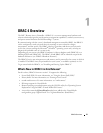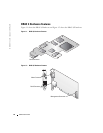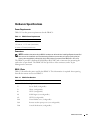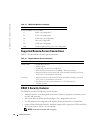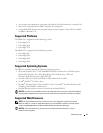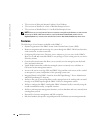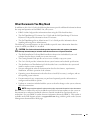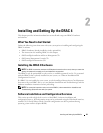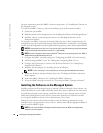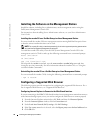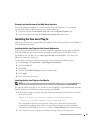
26 DRAC 4 Overview
www.dell.com | support.dell.com
• 32-bit versions of Microsoft Internet Explorer 6.0 on Windows
• 32-bit versions of Mozilla 1.6 or later on Red Hat Enterprise Linux
• 32-bit versions of Mozilla Firefox 1.0.1 on Red Hat Enterprise Linux
NOTE: When you are using Internet Explorer on systems running Microsoft Windows, to view localized
versions of the DRAC 4 Web-based interface, open the Windows Control Panel, double-click the
Regional Options icon, and select the desired locale from the Your locale (location) drop-down menu.
Features
The following is a list of features available on the DRAC 4.
• Dynamic registration of the DRAC 4 name in the Domain Name System (DNS).
• Remote management and monitoring of a system through the DRAC 4 Web-based interface,
serial connection, or telnet connection.
• Configuring Microsoft Active Directory service software to give you access to the DRAC 4,
allows you to add and control the DRAC 4 user privileges of your existing users in your Active
Directory software.
• Console redirection feature that allows you to remotely use the managed system keyboard,
video, and mouse functions.
• Virtual Media feature that enables the managed system to remotely access a diskette or
CD located on the management station.
• Access to the system event log (SEL) and DRAC 4 logs and last crash screen (of the crashed
or unresponsive system) independent of the operating system state.
• Integrated launch of the DRAC 4 interface from Dell OpenManage™ Server Administrator
and Dell OpenManage IT Assistant.
• Ability to alert you to potential problems on the managed system by sending either an email
message or an SNMP trap through the DRAC 4 NIC to a management station.
• Ability to configure the DRAC 4 and update DRAC 4 firmware locally or remotely using the
racadm command line utility, a scriptable interface.
• Ability to perform power management functions, such as shutdown and reset, remotely from
a management console.
• Password-level security management and SSL encryption.
• Role-based authority that provides assignable permissions for different systems management tasks.






